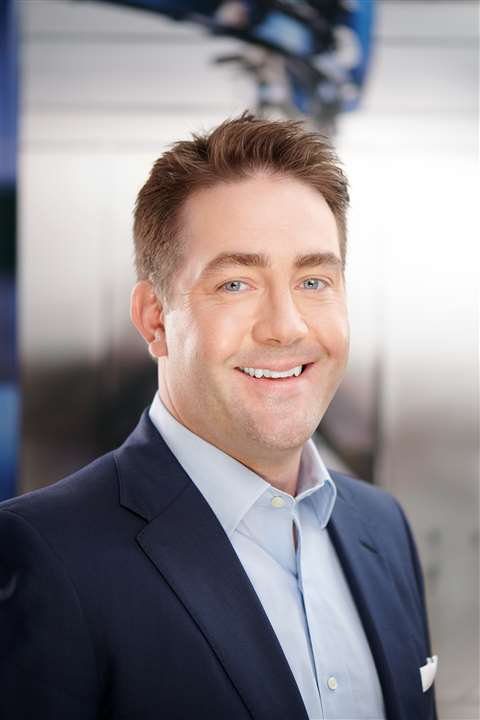5 equipment manufacturing trends for 2023
11 January 2023
With 2022 firmly in the rearview mirror and the new year now underway, it’s clear many of the opportunities and challenges impacting equipment manufacturers today are poised to remain as relevant as ever in the weeks and months ahead.
While it’s a fool’s errand to try and predict exactly how 2023 will unfold for the industry, equipment manufacturers would be wise to pay close attention to several trends and how they may evolve in the short term.
With that in mind, the Association of Equipment Manufacturers (AEM) caught up with several staff leaders to hear which ones, specifically, are top-of-mind for them just now.
1. The industry-wide emphasis on organisational culture
-- By Jaime Vos, AEM Senior Director of Revenue Development and Cultural Innovation
 Jaime Vos, AEM Senior Director of Revenue Development and Cultural Innovation. (Photo: AEM)
Jaime Vos, AEM Senior Director of Revenue Development and Cultural Innovation. (Photo: AEM)
With so much change taking place in 2022, organisations in many industries, including equipment manufacturing, are being forced to respond by reexamining their business models.
Supply chain issues, increased competition, technology advancements and economic uncertainty have all placed pressure on companies to adapt, innovate and rethink how they do business.
In addition to these challenges, leadership will also need to address the morale of their workforce this year.
What many have called the Great Resignation has affected organisations of all sizes and has made employee retention the single most important issue of 2023.
Shifting employee values
After struggling through the Covid-19 pandemic, people are now reevaluating their role in the workplace.
Many have placed a stronger value on their health and have chosen to accept other opportunities better aligned with their personal well-being.
Taking this into account, organisations will need to create a shared vision that supports the following areas for its employees:
- Employee values
- Work/life balance
- Creativity and collaboration
- Mental health awareness and support
- Hybrid telecommuting models
- Opportunities for career growth
Studies show that employees who feel recognized, respected and supported do more than what is expected.
Employee retention
If organisations want to strengthen employee retention, leaders will need to communicate openly with workers, listen to their concerns, address issues in real time and provide opportunities that empower a healthy culture.
Employees want to feel valued in their roles. Organisations that create a shared vision of well-being for their staff will see their culture empowered, inspired and committed to a prosperous new year.
2. The new normal of employee training and development
-- By Julie Davis, AEM Senior Director of Workforce and Industry Initiatives, SHRM-CP
 Julie Davis, AEM Senior Director of Workforce and Industry Initiatives, SHRM-CP. (Photo: AEM)
Julie Davis, AEM Senior Director of Workforce and Industry Initiatives, SHRM-CP. (Photo: AEM)
Workforce issues remain so prevalent in equipment manufacturing today, that it’s simply not enough to foster a strong organizational culture to meet workforce demand.
Fewer people working coupled with more jobs, more diversity in available jobs and more competition across industries make workforce arguably the most pressing issue as 2023 gets underway.
Up-skilling, re-skilling and new-skilling
Because of these challenges, employee training and development should be a top priority for equipment manufacturers in 2023 and beyond.
While employee training and development may be a budgetary afterthought for some equipment manufacturers, it’s becoming increasingly clear up-skilling, re-skilling and new-skilling employees on an ongoing basis is fast becoming the new normal, and here’s why.
Consider someone who has an engine spread out in a garage, is wiring his or her friend’s hunting cabin, or is the neighbourhood handyman and, based on his or her hobbies, interests and personal aptitude, the person would be a good fit to work in the skilled trades.
Imagine being able to cast an organisational hiring net to consider people based on the skills, talents and interests that would make working in the skilled trades a good fit, instead of hiring someone based on skills used in a job a person could get as a 20-year-old. (Let’s face it, none of us were working in the job we wanted at that point, we were working in the job we could get.)
Skills-based and apprenticeships
This is exactly how skills-based hiring works, and it results in having a wider talent pool from which to recruit.
The catch is equipment manufacturers must be able assess individual skills and then train them to competency. (This can be done either by partnering actively with education, possessing trainers OR a combination of the two.)
The government funded the Apprenticeship Building America grants programme to the tune of $121.7 million dollars in 2022.
Why? Because apprenticeship and work-based learning programmes done correctly continue to be a proven way to train, attract and retain workers think again.
Can’t set one up? Think again. Partners like Apprenticeship Works, JFF and GPS Education can guide organizations through the process both efficiently and effectively.
The workforce is aging, and employees at every level with critical masses of knowledge are walking out the door every day.
What questions are asked before they leave, and how is their knowledge being captured and transferred to the person who will be taking their place.
The importance of knowledge sharing
Three years ago, before the surge of retirements that came with Covid-19, surveyed Baby Boomers said:
- 57% have shared half or less of the knowledge needed to perform their job responsibilities with those who will assume them after they retire
- 21% have shared none of their knowledge
- Only 18% have shared all their knowledge
Transferring knowledge is poised to work best when training and development is already normalised within a company’s culture.
Trainers and educators are taxed to keep pace with technological advancements, yet new skillsets are needed every day.
There is no automation to off-set workforce shortages without up-skilling or new-skilling workers to use advancing equipment.
Ready or not, partnering, internal training and ongoing learning is here to stay.
3. The ongoing impact of supply chain issues
-- By Kip Eideberg, AEM Senior Vice President of Government and Industry Relations
 Kip Eideberg, AEM Senior Vice President of Government and Industry Relations. (Photo: AEM)
Kip Eideberg, AEM Senior Vice President of Government and Industry Relations. (Photo: AEM)
It has been an issue for several years now, and unfortunately equipment manufacturers will continue to hear about it for a while – the supply chain.
There is no denying that the 2020 Covid-19 pandemic turned the world on its head, but it was tough to predict just how long the supply chain would be impacted by the pandemic.
A recent AEM survey of 179 equipment manufacturers revealed that 98% of equipment manufacturers are still battling with an unreliable supply chain – and over half (58%) are experiencing worsening conditions.
What is driving the supply chain crisis?
AEM confirmed that the two driving factors of these supply chain woes stem from workforce shortages and access to intermediate components for production.
These things coupled together paint a stark picture, but there are reasons to be optimistic that supply chain challenges will start to abate over the course of this year.
One thing is certain, equipment manufacturers remain willing to rise to the occasion and adapt.
AEM continues to survey our member company executives to better understand how they are impacted by continued high inflation, strained supply chains and global instability, and to provide elected officials with the data points they need to move legislation that will revitalise US manufacturing and bolster U.S. global competitiveness.
Republicans and Democrats can take immediate action to alleviate these problems by prioritizing an extension of research and development (R&D) expensing, enacting meaningful permitting reform, removing tariffs on a host of critical components, and reaching a bipartisan, long-term agreement on the debt ceiling this year.
4. The rise of alternative power sources
-- By Jason Malcore, AEM Senior Director Safety & Product Leadership
 Jason Malcore, AEM Senior Director Safety & Product Leadership. (Photo: AEM)
Jason Malcore, AEM Senior Director Safety & Product Leadership. (Photo: AEM)
Governmental agencies and non-governmental organisations throughout Europe and across North America and Asia continue to look for new opportunities to transition their automotive and equipment fleets toward new decarbonised technologies.
These pressures and motivations reveal themselves in the form of new rules and regulations on internal combustion engine emissions and incentive programs for zero-emission equipment purchases.
In addition, increasing customer demands for hybrid and zero-emission vehicles also highlight the industry’s evolution and direction in this space.
Pressures on the construction industry
Some examples of anticipated industry pressures in 2023 are as follows:
- California Air Resources Board’s (CARB) continued rulemakings and public workshops regarding the next stage of California’s engine emissions regulations
- The implementation of the Inflation Reduction Act’s tax incentives for the electrification of light duty, commercial and heavy-duty vehicles
- Federal and state executive announcements to decarbonize the US economy
- Zero-emissions requirements for small engines under 25 hp
Diesel fuel is the primary power source for the non-road equipment industry, and it will likely continue to be for the foreseeable future.
However, if one thing’s for certain, it’s this year will spotlight the many alternative power challenges and opportunities facing the non-road equipment industry and represent an inflection point for new power sources over the coming decade.
5. The acceleration of communication and connection
-- By Kate Huskin, AEM Senior Director of Communications
 Kate Huskin, AEM Senior Director of Communications. (Photo: AEM)
Kate Huskin, AEM Senior Director of Communications. (Photo: AEM)
The key to driving change in an organization is rooted in an organisation’s ability to communicate effectively and build lasting connections with important stakeholders.
In 2023, communications will take on a leading role in helping organisations address challenges, identify opportunities and drive success.
Effective communications happens from the inside out, and a renewed focus on internal communications will be needed to help organisations establish and “walk the talk” of their culture, putting actions behind the words on their websites and internalizing how they wanted to be viewed and accepted by their employees, prospective employees, customers, partners, and the marketplace at large.
During the pandemic, communications leaders across the globe were faced with unprecedented communication challenges that required a new playbook for sharing up-to-the-minute information.
This has forever changed the way we look at crisis communications, and communications and public relations teams are in a new normal of crisis communications.
The equipment manufacturing trends listed above, from organisational change and employee training and development, to supply chain challenges and the rise of alternative power, are challenges that will be driven by communications and an organisation’s ability to connect and support its internal and external stakeholders.
About the Association of Equipment Manufacturers (AEM)
AEM is the North America-based international trade group representing off-road equipment manufacturers and suppliers with more than 1,000 companies and more than 200 product lines in the agriculture and construction-related industry sectors worldwide.
The equipment manufacturing industry in the United States supports 2.8 million jobs and contributes roughly $288 billion to the economy every year.
MAGAZINE
NEWSLETTER
CONNECT WITH THE TEAM





